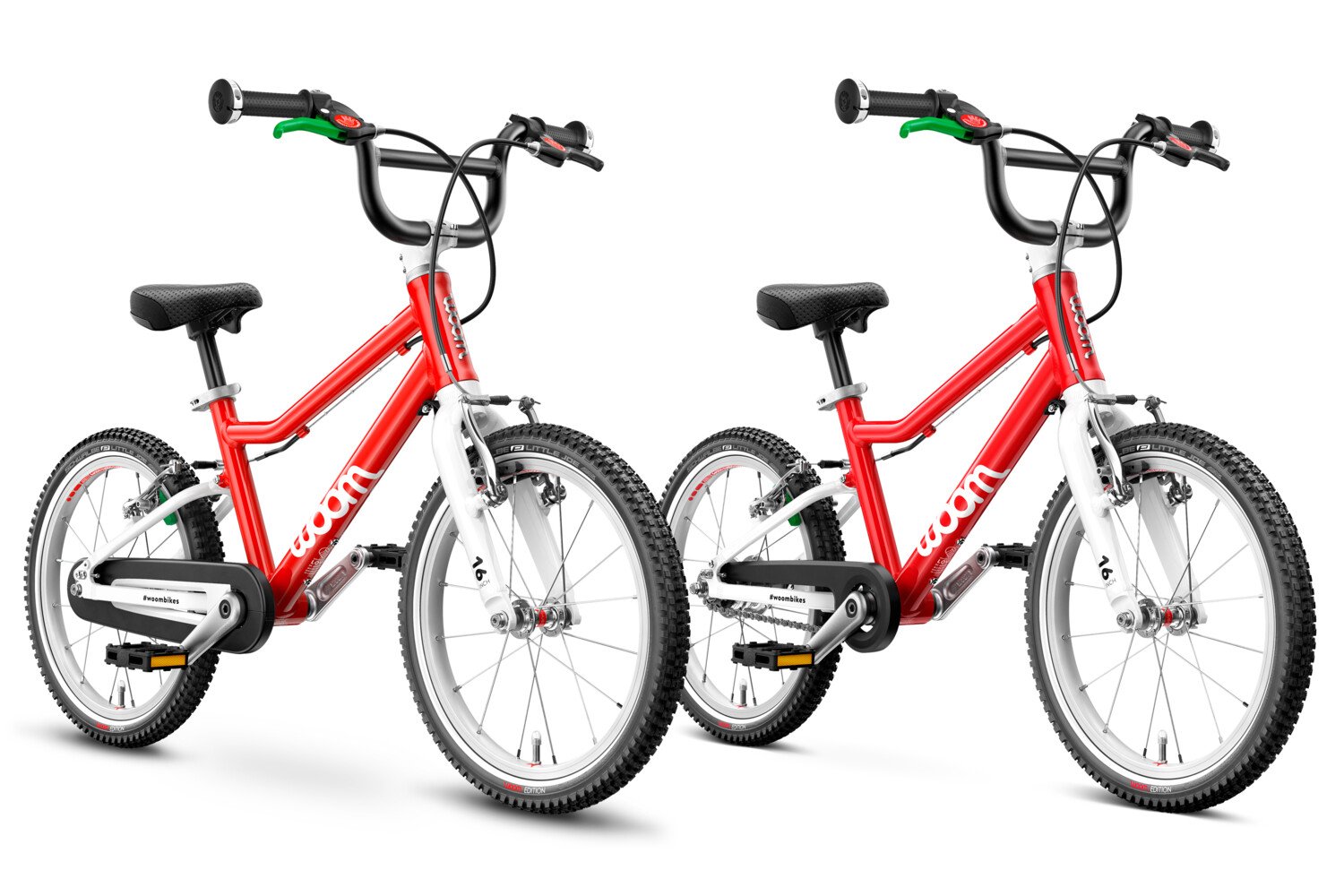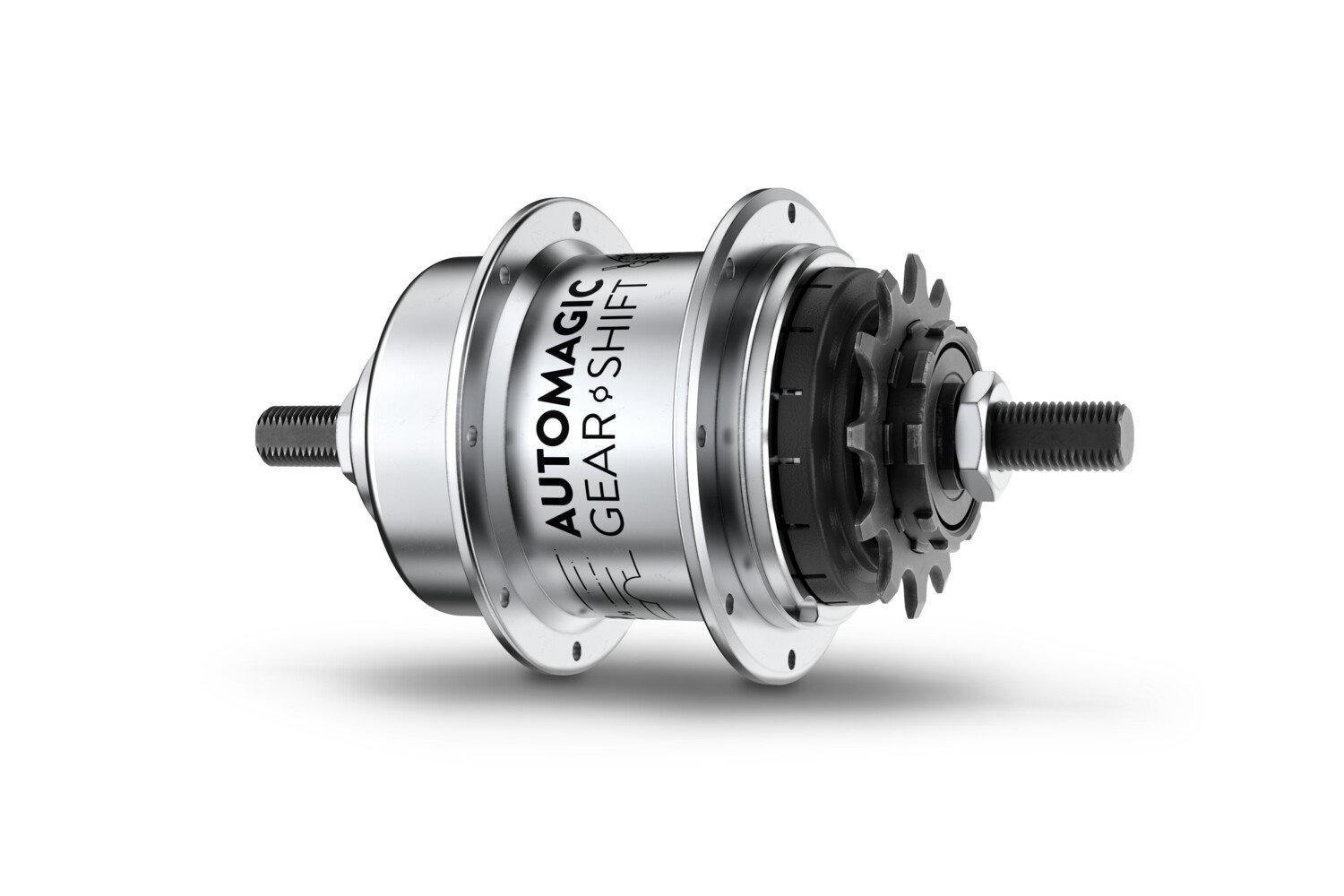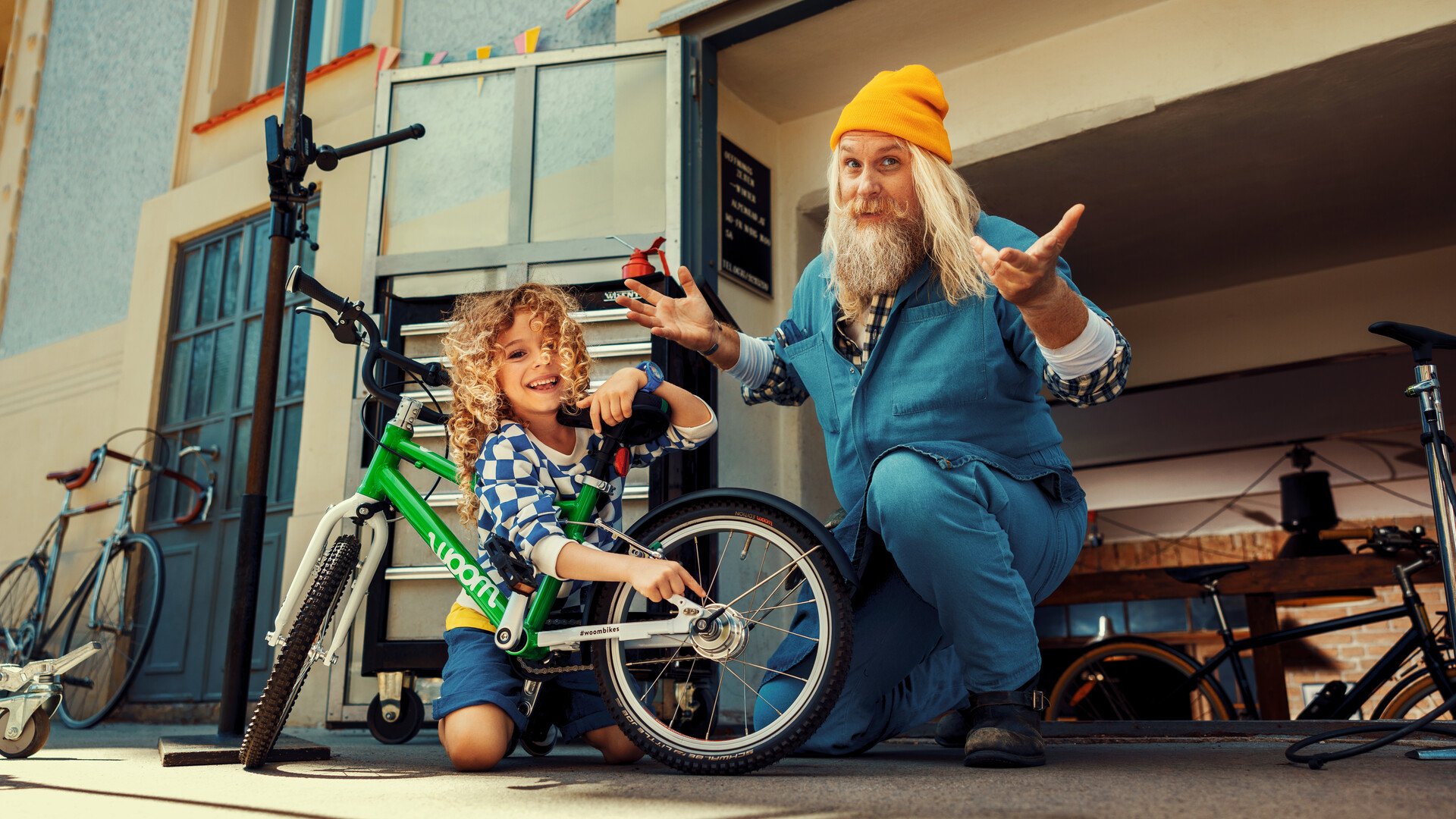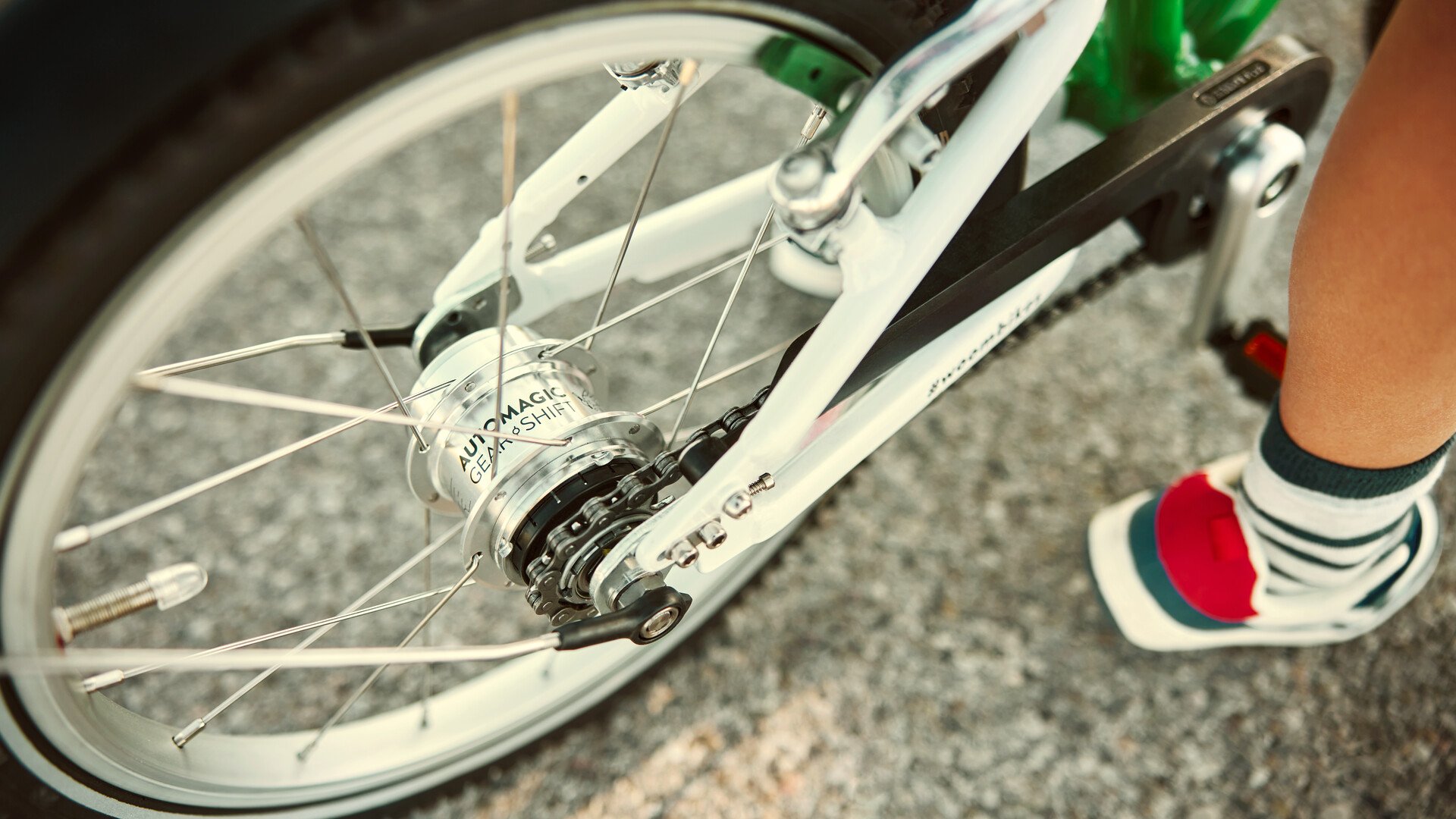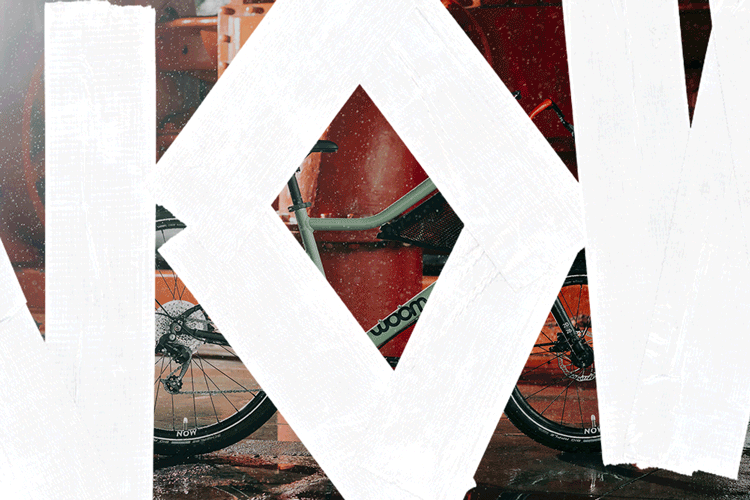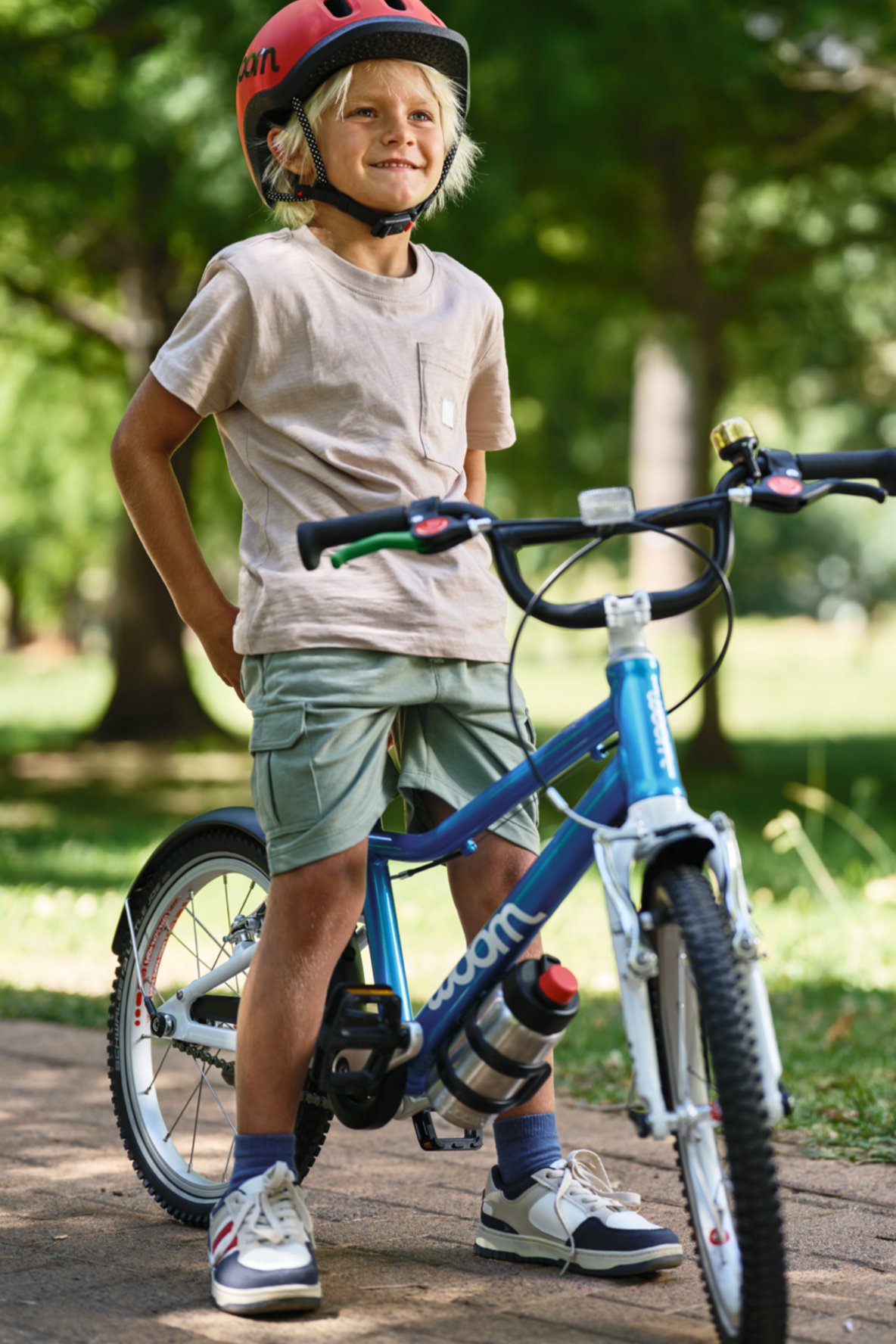woom 3 AUTOMAGIC: Why an Internal Gear Hub Matters


Q: Why is it called the “woom 3 AUTOMAGIC”?
A: The woom 3 AUTOMAGIC features an internal gear hub with two-speed automatic shifting. Because the shifting occurs somewhat “magically” at roughly 7 mph without being shifter-actuated, “automagic” seemed like an obvious name.
Q: Why did woom create the woom 3 AUTOMAGIC?
A: Our team of engineers designed the woom 3 AUTOMAGIC specifically to meet the needs of adventurous young cyclists around the age of 4-6 who are no longer satisfied within the confines of a single gear. While single-speed bikes are great for learning to ride, having just a single gear can be limiting for those who have already mastered the basics.
Although fitting a derailleur and a cassette onto a tiny 16” bike frame isn’t feasible, we nevertheless received customer feedback from the parents of woom 3 Riders, indicating a desire for higher gearing for their kiddo’s bike.
That’s where the two-speed hub in the woom 3 AUTOMAGIC comes into play. By providing access to a higher gear, the woom 3 AUTOMAGIC addresses the pain point experienced by children who’ve already “maxed out” the gearing on their single-speed bike and find themselves excessively spinning their pedals.
Q: Is the plan for the woom 3 AUTOMAGIC to replace the woom 3 ORIGINAL?
A: No, the woom ORIGINAL 3 will continue to be produced and remains the ideal bike for children learning to ride at this age range. For a thorough comparison of these two models and to determine which one is right for your child, read woom’s blog on the topic.
Q: Just how light is the woom 3 AUTOMAGIC?
A: woom prides itself on creating incredibly lightweight and sturdy children’s bikes without compromising ergonomics or riding performance. At just 14.3 pounds, we’ve yet to find a lighter geared kids’ bike on the market. With two different gears, the woom 3 AUTOMAGIC packs quite the punch without breaking the scale.
Q: Has woom used automatic hub shifting in the past?
A: Yes, in fact, we have. From 2016-2018, woom used a similar SRAM Automatix 2-speed hub in some of our previous models. Due to changes in the supply chain and component availability, this became unavailable after 2018.
Q: Did woom design the AUTOMAGIC hub?
A: We can only take credit for the awesome artwork design on the outer shell of the hub, depicting a speedy magician’s rabbit. The hub’s inner workings were all conceived of and produced by Sturmey-Archer. While you might think this ingenious technology is relatively new, you would be wrong. Sturmey-Archer has been producing internal gear hubs for over 100 years – an incredible testament to their timeless quality.
In fact, the usage of internal gear hubs preceded derailleurs by several decades but fell out of favor due to the broader range of gears made available by derailleurs. While most modern bikes use derailleurs, some select children’s bikes, beach cruisers, and Dutch-style commute bikes still use internal gear hubs.
Q: How does this magic hub work?
A: The speed of the hub’s rotation — not the torque applied to the pedals — is what actuates the gear shifting mechanism inside the AUTOMAGIC hub.
Once the bicycle reaches approximately 7 miles per hour (or about 11 kph), the internal gearing will automatically switch from low to high gear. This automatic shift allows Riders to start off in the easier low gear with less pedal resistance, build up speed, and when they’re ready, they’ll receive more pedal resistance in second gear.
The top gear allows the Rider to go faster, with fewer pedal revolutions (or less spinning). Also, should the child face a stiff headwind or a steep hill and dip below 7 mph, the hub will shift down into the lower gear, and pedaling will become easier.
Q: What causes the automatic shift from low to high gear?
A: It all has to do with centrifugal force, or the outward force on an object when it’s rotated. An example of centrifugal force in action would be when you make a sharp left turn in a car and feel pulled to the right.
Inside the rotating hub, there are small spring-loaded weights connected to pawls, and with enough centrifugal force, these pawls separate and are pushed outward within the hub. This in turn forces the pawls to trigger the centrifugal clutch, causing the bicycle to shift into a higher gear. Of course, feel free to let your child simply believe it’s magic!
Automatic speed-actuated shifting is hugely beneficial to young children. No manual shifter is necessary for youngsters to learn to use, and kids can count on the bicycle predictably shifting at the same speed. This repetition allows young Riders to anticipate the change in pedal resistance and intuitively know what to expect.
Q: What differences does the gear hub have compared to a derailleur and a cassette?
A: First of all, there’s the appearance. An internal gear hub is nearly indistinguishable from a single-speed freewheel or coaster hub, whereas adding a derailleur and a cluster of sprockets is quite noticeable. Compared to a derailleur and an 8-speed cassette (e.g., on the woom 4), the automatically shifting internal gear hub is exceptionally durable and requires minimal maintenance. Of course, the trade-off is fewer gears.
Besides the obvious (no shifter needed), the lack of a dangling derailleur and a protruding cassette also means that the gear-shifting mechanisms within the hub are virtually indestructible. Young children aren’t known for being careful and delicate, so this is an important detail.
Lastly, because they aren’t as exposed to the elements, you can expect an internal gear hub to do its job for hundreds or even thousands of miles without requiring maintenance. If a parent passes the bike down to a younger sibling years later, the hub may need to be removed and regreased.
Having an internal gear hub means your child won’t get their gears out of whack by accidentally throwing their bike down on the drive side. It also means that you won’t have to teach them the finesse of manually shifting gears just yet.
Q: How does the gearing on the woom 3 AUTOMAGIC compare to the woom 3 ORIGINAL?
A: First, we ought to define “gear ratio.” On a bicycle, a gear ratio is the number of revolutions the rear wheel makes with one revolution of the pedals. A higher gear ratio usually translates to a faster top speed but requires more work per pedal stroke. A lower gear ratio makes it easier to pedal but will result in less distance traveled per pedal stroke.
Because the chainring and rear cog have identically sized teeth, determining a gear ratio on a bicycle is as simple as counting the teeth on each sprocket and dividing. The single-speed woom 3 ORIGINAL has an 18-teeth chainring and a 10-teeth rear cog, resulting in a gear ratio of 1.8.
In comparison, the woom 3 AUTOMAGIC has a lower and a higher gear than its ORIGINAL counterpart. In the low gear, the AUTOMAGIC starts with an easy-going gear ratio of 1.5, then kicks up 37% to the top gear, with a 2.06 gear ratio. The end result: Compared to the standard single-speed woom 3, the first gear ratio on the woom 3 AUTOMAGIC is 17% lower while the second gear ratio is 14% higher than on the woom 3.
The catch for this “best of both worlds” scenario is a weight difference of about a pound. For this reason, the lightweight woom 3 ORIGINAL remains the ideal bicycle for children aged 4-6 who are still learning to ride.
While the low gear helps make it easier to get things rolling, the top gear is the primary benefit of the woom 3 AUTOMAGIC. Advanced young Riders who have already mastered the basics (balancing, pedaling, and braking) may find themselves “spinning out” on their single-speed bike set with too low a gear ratio. Herein lies the inherent limitation of a single-speed bike; one gear ratio won’t please everyone. Any child who is already spinning out on their woom 2 (or another single-speed bike) and is approaching 41” - 47” in height will love riding the woom 3 AUTOMAGIC.
| Bike/Gear | Gear Ratio* |
| woom 3 ORIGINAL | 1.8 |
| woom 3 AUTOMAGIC 1st gear | 1.5 |
| woom 3 AUTOMAGIC 2nd gear | 2.06 |
* Gear ratio: the number of revolutions the rear tire makes with one revolution of the pedals.
Q: Aside from the internal hub, are there any other differences between the woom 3 AUTOMAGIC and the woom 3 ORIGINAL?
A: The rear hub is definitely the main difference between the two models; however, there are a few other minor differences. The easiest-to-spot visual difference is the redesigned chainguard. The woom 2 and woom 3 chainguards fully encase the entire drive system, but the woom 3 AUTOMAGIC was built with a different Rider in mind.
Dubbed the “Bashguard Plus,” the guard fully protects the chainring and covers the top of the chain while leaving the bottom portion exposed. Being designed with more ambitious young Riders in mind, this leaves the chain easily accessible for regular lubrication for those kids who put on serious miles. It also allows children who have already become comfortable around bicycles to see the chain in motion and understand how it works.
Other differences between the models include the weight, adjusted spoke lengths, and added chain links to account for the wider hub.
